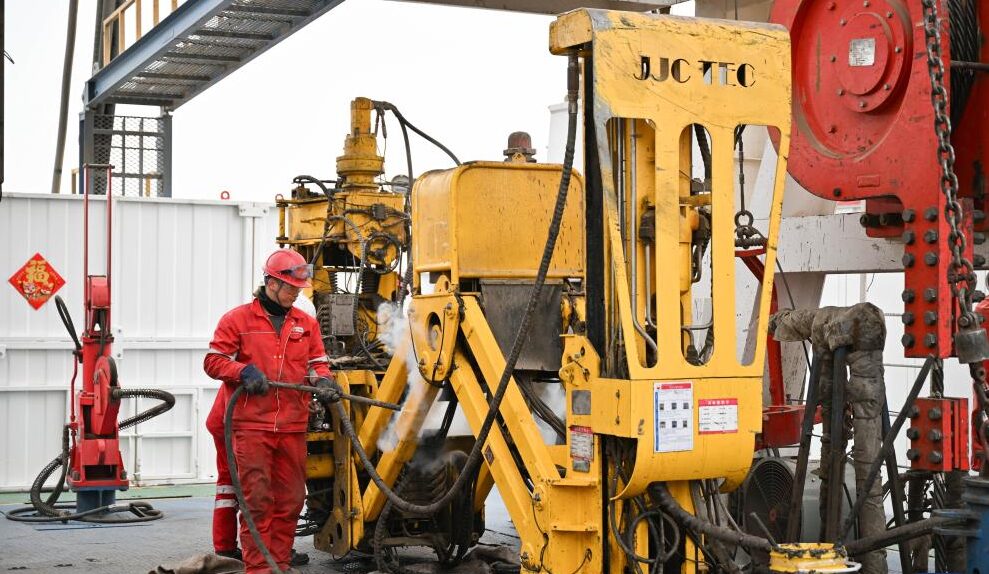Infrastructure
Shendi Take-1: Inside China’s Deepest Borehole
China’s landmark superdeep borehole drilling exceeds 10,000 metres.

China National Petroleum Corporation (CNPC) has completed the drilling of Asia’s deepest vertical borehole, Shendi Take-1, which has reached a record depth of 10,910 metres.
Located in the Taklimakan Desert in the Tarim Basin, Xinjiang Uygur, Shendi Take-1 is China’s first scientific exploration well with a depth exceeding 10,000 metres.
It is currently the world’s second-deepest onshore well, according to China National Petroleum Corp, after Russia’s Kola Peninsula deepest hole.
Shendi Take 1 was set to reach a designed depth of 11,100 metres, but the presence of natural gas was confirmed before reaching the milestone, forcing drillers to end the mission.
The Kola Superdeep Borehole is the deepest borehole ever drilled, reaching a depth of 12,262 metres. Drilling began in 1970 and took 20 years to complete.
The project sought to explore the Earth’s crust, providing valuable geological insights.
Drilling of Shendi Take 1 began on May 30, 2023, and ended on February 20, 2025. The drillers penetrated 12 continental strata, with 1,000 drill pipes driven into the ground.
Over 20 drill bits were consumed in the process.
The project set five engineering records, including the fastest onshore drilling beyond 10,000m. Other records include the deepest liner cementing and the deepest wireline imaging logging.
“It is the first time that China has drilled a vertical borehole over 10,000 metres deep,” said Wang Chunsheng, chief expert of the Tarim Oilfield of CNPC.
Typically, wells ranging from 4,500 to 6,000 metres deep are classified as deep wells, while those between 6,000 and 9,000 metres are termed super-deep wells.
Wells exceeding 9,000 metres are classed as ultra-deep.
According to Wang, the Shendi Take 1 project marked China’s inaugural attempt at drilling a vertical borehole exceeding 10,000 metres.
Major challenges
According to CNPC,it took over 580 days to complete the 10,910-metre drilling, with more than half of the time — some 300 days — spent on the final 910 metres.
“Every additional metre increases drilling complexity exponentially,” said Min Peng, director of the drilling platform, who had been stationed on-site throughout the project.
After such continuous effort, the well has penetrated 12 geological formations, ultimately reaching rock layers that date back over 500 million years.
Wen Liang, a lead technician on the “Shenditake 1” project, highlighted the immense challenges encountered during drilling: “We overcame a series of technical difficulties, including extreme loads, wellbore instability, and formation leakage,” he said.
READ: Skanska Begins Massive Upgrade of MetLife Stadium
At 10,000 metres below the surface, temperatures rise above 210 degrees Celsius—hot enough to vaporize cooking oil—while pressure exceeds 145 MPa, surpassing the crushing forces at the deepest point of the Mariana Trench.
“At depths surpassing 10,000 metres, a series of extremes relentlessly tests the boundaries of China’s ultra-deep drilling technologies. Drilling was as difficult as the lunar exploration programs,” said Sun Jinsheng of the Chinese Academy of Engineering.
To support the project, CNPC developed the world’s first 12,000-metre automated drilling rig and a suite of advanced ultra-deep well logging tools.
“With more than 90% of the drilling system components domestically developed, these self-developed technologies form the bedrock of China’s capability to pioneer ultra-deep and geologically complex exploration frontiers,” said Li Yahui, chief designer of the drilling rig.
Beyond oil and gas exploration, Shenditake 1 has provided Asia’s first 10,000-metre-deep core samples, providing invaluable data for geology, geochemistry, and geothermal research.

Kola borehole
Kola Superdeep Borehole is the deepest hole in the world. The 12,262-metre superdeep borehole retains the world record achieved in 1989.
However, in May 2008, the record length was surpassed by a curved borehole of the extended reach drilling well BD-04A in the Al Shaheen Oil Field in Qatar, with a total length of 12,289 metres and a horizontal reach of 10,902 metres.
1970
Drilling of the Kola borehole started in 1970 as the Soviets sought to study the earth’s crust, explore geological processes, and advance deep drilling technologies.
The borehole revealed surprises like the absence of the “Conrad discontinuity,” sudden liquid water depths, and microscopic fossils dating back 2 billion years.
Despite reaching the 12,262-metre depth, drilling met challenges such as rising temperatures and rock densities, which led to the project’s cessation in 1992.
The Kola Superdeep Borehole was sealed in 2005.














